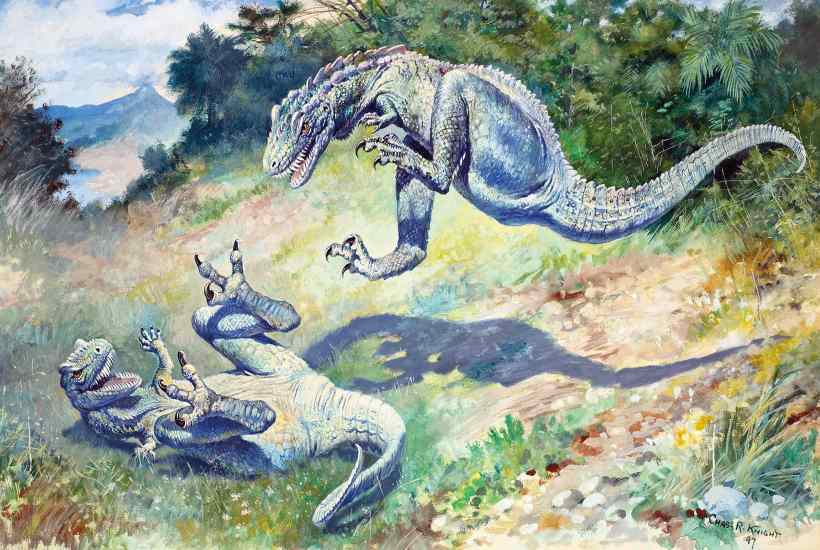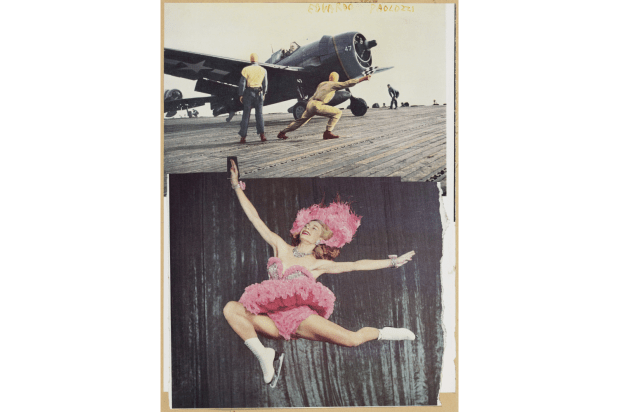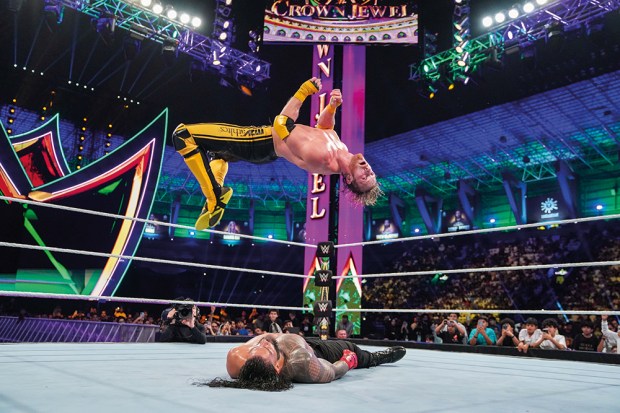In one of Italo Calvino’s fables, a single dinosaur survives the extinction of his kind. After a few centuries in hiding, he comes out to discover that the world has changed. The ‘New Ones’ who have taken over the planet are still terrified of dinosaurs; they tell each other terrifying stories about the time when the reptiles ruled the world, or secretly fantasise about being brutalised by them, but they don’t recognise the survivor for what he really is. They no longer know what a dinosaur looks like. The newcomer is given a name – the Ugly One – and invited into their society. Eventually, they find a heap of dinosaur bones in a melting glacier, and take their new comrade to gawp at it. ‘If one of them had looked from the skeleton to me,’ the Ugly One reflects, ‘he would have realised at once that we were identical. But nobody did this. Those bones, those claws, those murderous limbs spoke a language now become illegible.’
Do we know what a dinosaur looks like? Well, we think we do; we’ve all seen pictures. These pictures are called paleoart, and paleoart tends not to occupy a particularly high place in art history. Even now, it’s written off as kitsch and tat: all those exploding volcanoes in the background, those gaudy sunsets, those scenes of lizardy combat and gore. But I think it might be more important than it seems. Instead of simply reproducing the visible world, paleoartists had to make a representation of a thing that no human being had ever seen. In a sense, this was the first truly modern art. Or if they have any precedent, it’s in the medieval artists who lived before the prohibition on graven images wore off – who tried to represent, in codes and symbols, the image of God.
Probably the most famous early dinosaur images are those sculpted by Benjamin Waterhouse Hawkins to adorn the Crystal Palace in 1854. Hawkins’s concrete dinosaurs are squat, hunched monsters, low to the dirt, tails dragging behind them. The Iguanodon is particularly famous: Hawkins built it to look a little like a Chinese dragon, sitting heavily on four splayed feet, with a curved horn on the end of its nose. We now know that the horn in question was actually the creature’s thumb. This thing was based on its era’s most advanced scientific knowledge, but today it’s an image without a referent. His dinosaurs are barely even recognisable as dinosaurs; they look like giant crocodiles. They, too, have become illegible.
Eventually, Calvino’s dinosaur realises that his kind are not really extinct. ‘The more the dinosaurs disappear, the more they extend their dominion, and over forests far more vast than those that cover the continents: in the labyrinth of the survivors’ thoughts.’ The way we imagine dinosaurs seems to point obscurely to something about ourselves, and the dinosaurs of the Victorian era are – there’s no other word for it – imperial. Instead of the world of late Cretaceous, they summon the Britain of the 19th century: something powerful but ponderous, and cold. They wallow in their stately bogs; they drag their tails behind them like robes; they are slow and stupid kings.
The 20th century brought a very different kind of monster. For more than 40 years from the mid-1890s, Charles R. Knight was the in-house paleoartist for the American Museum of Natural History in New York. He was also legally blind. He painted while squinting at a canvas only a few inches from his face, but the dinosaurs he depicted are full of light and life. ‘Leaping Laelaps’ (1897), one of his most celebrated works, shows a bright, impressionist summer hillscape in splotches of pale paint; Knight knew, like Pissarro, that ‘nature is coloured in winter and cold in summer, there’s nothing colder than full summer sun’. Two dinosaurs are fighting; one is poised in midair, with talons flexing and a whipping tail. Where previous dinosaurs had been colossal but slightly shapeless bags of flesh, Knight’s creatures are scrawny, all sinews and coiled muscle. This was the image that stuck around.
As a child, I had a book of dinosaur paintings by Ely Kish: fantastic, lurid 1970s-style scenes of knobbly dinosaurs living, breeding and dying in a brighter, more colourful world than the one I knew. But the picture that really stuck with me was the one of a T-Rex – almost emaciated, but with the kind of muscle definition you normally only see in an underwear advert – tearing long strips of flesh out of an Edmontosaurus’s thigh. Dinosaurs, for most of the 20th century, mostly fought each other in titanic single combat. Giant toothy predators, giant spiky prey. If you wanted, you could see these images as the products of a more nervous age, or maybe even an echo of the nuclear standoff: two huge and deadly empires squaring off against each other.
For what it’s worth, Soviet paleoart tended to be more sedate. The dinosaurs painted by artists such as Konstantin Konstantinovich Flyorov are as lean as their western counterparts, but they’re often half in shadow, or dwarfed by the landscapes around them: tragic creatures, already doomed.
Were these skinny dinosaurs any more accurate than the sloppy titans that came before them? Probably not. In 2013, the paleoartists John Conway and C.M. Kosemen produced a series of drawings of present-day animals, reconstructed in the same way we reconstruct dinosaurs: dull colours, skin tight against bones. Hummingbirds appear as black parasites, using their long beaks to drink a larger animal’s blood. A baboon is a wiry monster with sharp teeth poking out of its long, flat head.
In cinema, dinosaurs have stranger habits. Instead of staying in the past, they tend to come back – and when they do, they attack buildings. In 1953’s The Beast from 20,000 Fathoms, arguably the first dino-disaster movie, the first thing an atomically reawakened Rhedosaurus does on making land in New England is to destroy a lighthouse. It’s not hungry; it doesn’t try to eat the lighthouse-keeper; it simply bites the building itself in half and roars in triumph over the castrated stump. In 1956, the Beast of Hollow Mountain razes an Old West ranching town. Godzilla repeatedly levels Tokyo. In the Jurassic Park franchise, the genetically engineered dinosaurs demolish the safari park, and then much of San Diego. It’s strange: these creatures never seem to have the same antipathy towards geological formations, and it’s hard to imagine how a dinosaur would perceive a modern city except as a very complex rock structure. But like Calvino’s ‘New One’, we seem to secretly want a dinosaur to destroy us: to believe that there is something bigger and more powerful than the basically humdrum world we’ve made.
But today, things seem to be going in the other direction: we have made the dinosaurs normal. They’re fuller now, sleeker, more streamlined. They look a lot more like birds, the dinosaurs that actually did survive: more likely to hop and chirrup than blunder into buildings and roar. Most prominently, they have grown feathers. This last feature seems to have caused the most upset: there are large numbers of people who want to suggest, with an apparently straight face, that it’s part of some political campaign to emasculate the ancient reptiles.
It’s a silly complaint, but at the same time I think I know what they’re getting at. Last month, Apple TV+ aired a five-part series called Prehistoric Planet, produced by the BBC and fronted by David Attenborough, which took all the conventions of ordinary nature programming and applied them to creatures that no longer exist. We see the CGI dinosaurs – some with feathers, some without – engage in mating displays or lick salt from caves, set to cutesy music. All the ancient terror in those concrete sculptures and 1950s B-movies has vanished: dinosaurs are not symbols or nightmares; in the end, they’re just another type of animal. They had feathers. The stories Attenborough tells about them could also be told about a herd of zebras, or a hedgehog. With enough computing power, you can turn the impossibly ancient past into something strangely mundane.
At the start of each episode, Attenborough gives the same brief speech. He stands in front of a fossilised T-Rex in the Natural History Museum, and wonders: ‘What kind of an animal was it? What did it look like? How did it live? Now, scientific research has answered such questions.’ What you’re about to see is not a guess, or a flight of fancy; at last, he promises, you can see them exactly as they really were. But you can’t. The BBC’s new dinosaurs might be slightly more accurate than Charles R. Knight’s or Benjamin Hawkins’s in terms of fat distribution or whether they have a thumb on their noses, but it doesn’t change the fact that every image we create of a dinosaur will always, always be wrong. We will never know exactly what they were like. The images we make of them are always a kind of dream: beautiful, not because they might be true, but because they skirt against the furthest edge of what we can ever understand.
All small children are fascinated by dinosaurs. I was: I have dozens of old exercise books that I filled with my own paleoart when I was supposed to be learning my times tables. It’s the size and the grandeur of the things that make them attractive, of course, but they also teach you an important lesson. The adult world, with its jobs and taxes and politics, is not really so important. It’s built on the ruins of another world, one that was bigger in every way, and which will never be fully known.
There’s a new Jurassic Park film out, in which Chris Pratt chases blandly photorealistic dinosaurs across a series of green screens. At the same time, the enormous diplodocus has returned to the great hall of the Natural History Museum. Go, you New One, and look at its bones.
Got something to add? Join the discussion and comment below.
Get 10 issues for just $10
Subscribe to The Spectator Australia today for the next 10 magazine issues, plus full online access, for just $10.
Jurassic World: Dominion is in cinemas now. Prehistoric Planet is streaming on Apple TV+.
You might disagree with half of it, but you’ll enjoy reading all of it. Try your first month for free, then just $2 a week for the remainder of your first year.














Comments
Don't miss out
Join the conversation with other Spectator Australia readers. Subscribe to leave a comment.
SUBSCRIBEAlready a subscriber? Log in